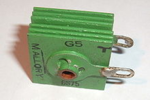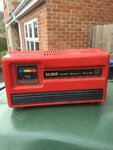You may (or may not) have gathered that for a significant portion of my working life I have been involved with caravans (both as a user and working for an appliance manufacture) I have seen probably ten or more batteries that have died as a direct result of being left on charge in a caravan whilst in storage. I should make it clear the chargers were not the "smart" power supplies we see today - they were the very basic old school transformer and rectifier units which were common up to the 1990's where the unload outputs could rise to over 21V - yes I am that old.
As a matter of fact I had no idea where you had worked for at least part of your life. That's great to know.
Working for an appliance manufacturer, and by implication with caravans "back in the day", would explain your comment. Ten or more "cooked" batteries whilst in storage is obviously significant.
I am relieved to hear that these "cookings" were historical and not as a result of "smart" chargers installed in more recent years. The situation 30 years ago regarding chargers is not comparable to today as you correctly point out.
I'll continue with my current regime safe in the knowledge that the "menu" does not include any "cooking".
Perhaps it would have been worth saying that the "cook whilst in storage" was not targeting the "smart" chargers installed in modern caravans but chargers in use 30 years ago.
Well - that saves me even considering messing with the CTEK and battery removal between outings.



